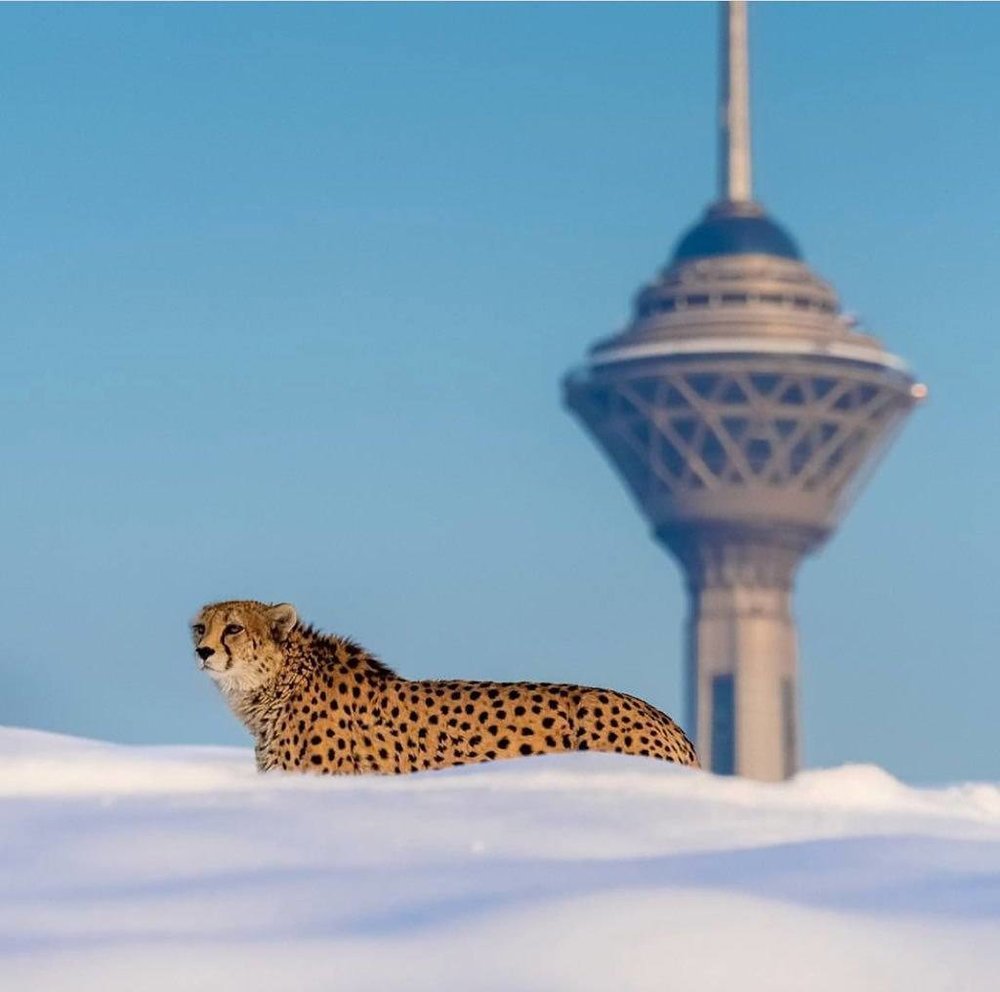Low genetic diversity biggest threat to Asiatic cheetahs: academic

TEHRAN – Asiatic cheetahs are more threatened by low genetic diversity than by humans, roads or other dangers, said Mohammad Sadeq Farhadinia, a member of International Union for Conservation of Nature (IUCN) Cat Specialist Group.
Due to the decline in the number of Asiatic cheetahs in the region, their genetic diversity is decreasing which is a great danger for their survival, Mehr quoted him as saying on Tuesday.
The main aim of Asiatic cheetahs conservation programs will not be “increasing” the number of cheetahs, rather trying to fight their complete extinction, he highlighted.
He described the chance for saving Asiatic cheetahs as “low”, adding, “We should be happy that the chance is still above zero.”
The sole solution for saving this species is following a definite captive breeding program, Farhadinia added.
“We should maintain the available genes; meaning more cheetahs should be captivated and if captivation is not possible, their sperms should be collected,” he said, adding, “Once a gene is destroyed, it cannot be invented.”
After captive breeding, the animals should be gradually taken back to their natural habitats, he noted.
“We have tried hard to save Asiatic cheetah in Iran but the result is not as expected,” Farhadinia emphasized.
The main aim of Asiatic cheetahs conservation programs will not be “increasing” the number of cheetahs, rather trying to fight their complete extinction.
The importance of genetic diversity
According to Greentumble, genetic diversity of plants, animals and other living organisms is what enables them to survive and thrive in this world.
The capacity of species to adapt to new circumstances, whether this is resource scarcity, a changing environment or other disturbances to their natural environment, depends on genetic diversity. Essentially, genetic diversity is the total number of characteristics in the genetic makeup of a species.
The greater the variation in genes, the more likely is that individuals in a population will possess the differentiated genes which are needed to adapt to an environment.
Captive breeding
The issue of captive breeding is one the controversial topics among environmentalists and is defined as the process of breeding animals in controlled environments within well-defined settings, such as wildlife reserves, zoos and other commercial and noncommercial conservation facilities.
Both instances of success and failure of captive breeding have been experienced in different parts of the world.
According to a report by Pacific Standard magazine, in 1986 only 18 black-footed ferrets remained in the world. Since then, a successful captive breeding program has brought the numbers for North America’s only native ferret to 500 in the wild. The Arabian oryx went extinct in the wild in 1972, but captive breeding has brought this gorgeous horned ungulate back to a population of approximately 1,000 in the deserts of the Middle East.
However, not all species can undergo captive breeding. Some species simply refuse to mate outside their normal habitat like Lonesome George, the Pinta Island giant tortoise who lived in captivity in the Galápagos for 41 years, as biologists tried to coax him into copulating with a female of a closely related species. His caretakers tried just about everything but the 100-plus-year-old George just wasn’t in the mood. He died in 2012, taking his species with him.
Another challenge in captive breeding programs is that releasing animals born in captivity into their natural habitats can also be tricky. Species may not learn how to survive in nature.
Also making sure that species have suitable habitat to return to is essential for successful outcomes.
Koushki and Delbar
Efforts for captive breeding of Asiatic cheetahs in Iran have not achieved any success yet.
Tehran’s Pardisan Park is home to three Asiatic cheetahs.
Koushki (a male cheetah) and Delbar (a female cheetah) were separated from their parents as a cub and since they haven’t been taught how to survive in nature by their parents, they were kept in captivity since then.
Continuous efforts have been made so that the cheetah couple could achieve a natural conception, but they were in vein. Veterinarians of Pardisan Park are trying to use artificial insemination for their breeding.
Another female cheetah cub was discovered from an animal trafficking band in December 2017. Named Iran, this cheetah is still young for becoming a mother but has raised hope for the breeding of this endangered species.
MAH/MQ/MG
Leave a Comment